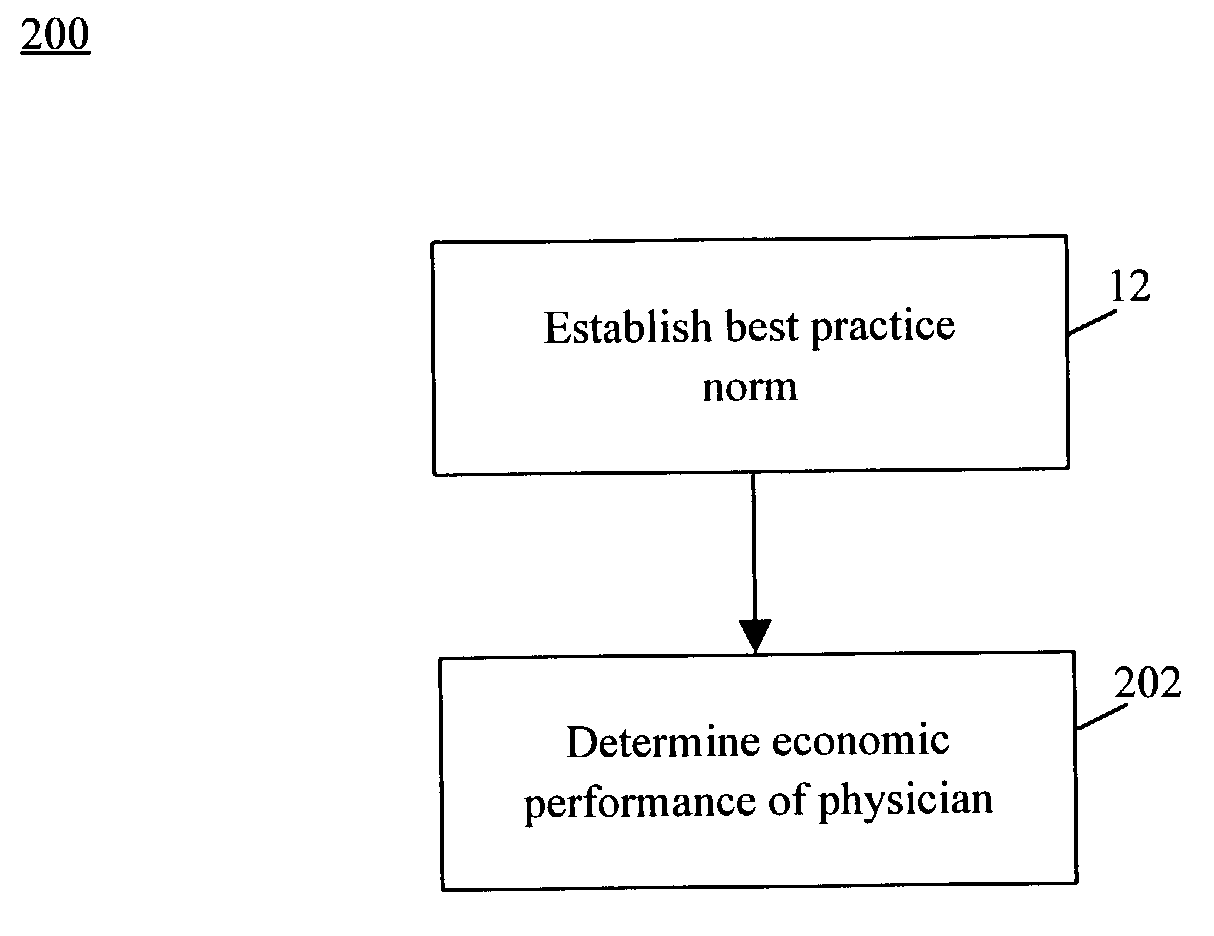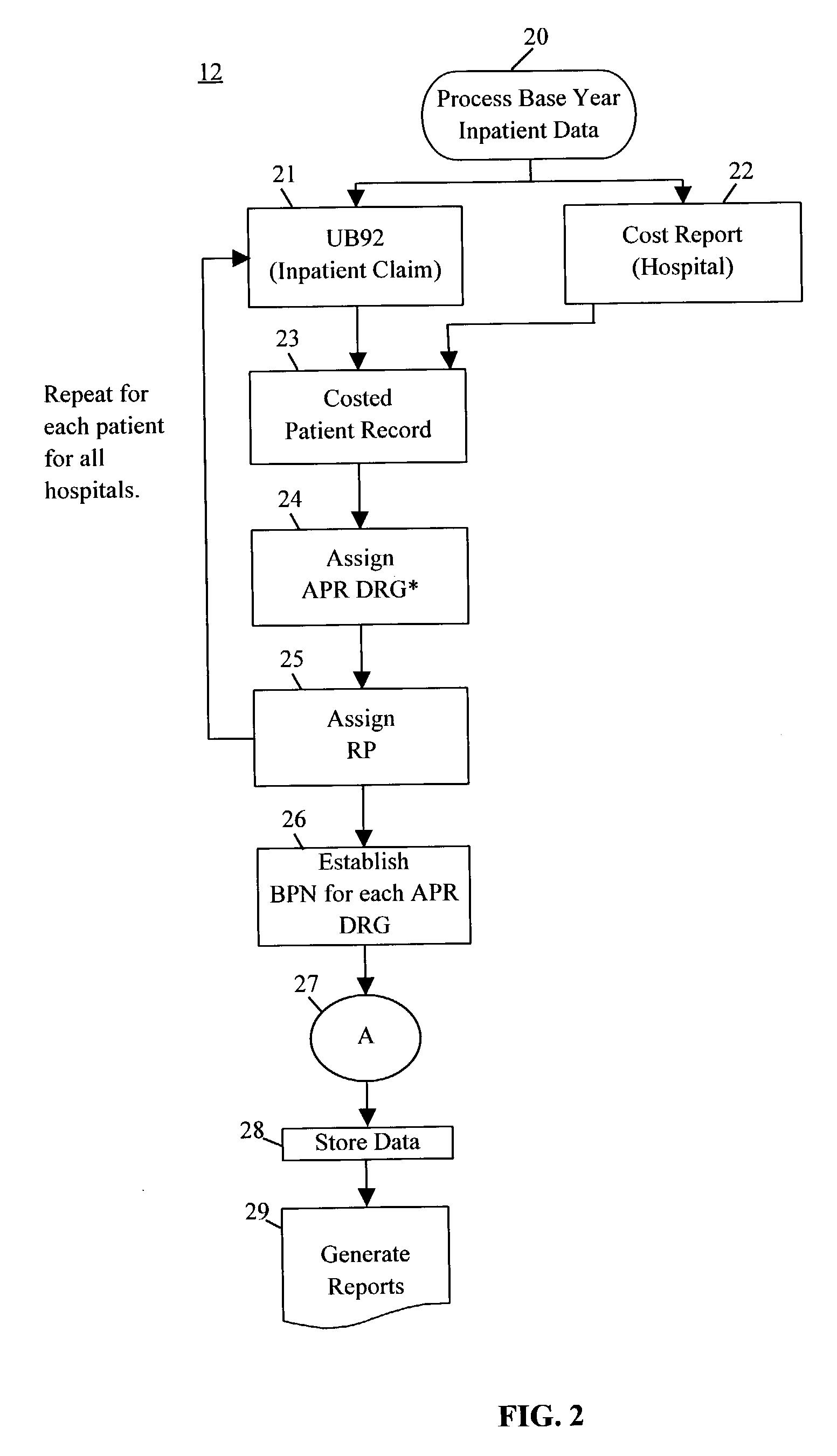Method and system for gainsharing of physician services
a technology for physician services and economic performance, applied in the field of method and system of physician economic performance evaluation, can solve the problems of inability to achieve improved operational performance of hospitals, complex and overly bureaucratic, and sometimes indirect strategies, so as to reduce hospital costs, improve operational performance, and improve efficiency
- Summary
- Abstract
- Description
- Claims
- Application Information
AI Technical Summary
Benefits of technology
Problems solved by technology
Method used
Image
Examples
example 1
[0077]1. Total Part A payments at 13 hospitals=$695,480,857. Apply Part A / B ratios to determine total Part B payments, and apply 25% limit to determine total pool available for incentive payments to physicians ($33,314,292).[0078]2. Utilize RP identifiers and Part A / B ratios to determine amount of total incentive pool available for distribution to Responsible Physicians ($22,561,127).[0079]3. Estimate payments for loss of income: Identify specific dollar amounts for physician inpatient visits (after initial consult, but prior to discharge) associated with medical admissions, by level of severity. Multiply fees by LOS savings projected for each level of severity and sum: $7,071,702.[0080]4. Subtract projected LOI ($7,071,702) from total pool available for distribution to RPs ($22,561,127) to determine total Performance Pool: $15,489,425.[0081]5. Apply Part A / B ratios to separate Part B payments to Responsible Physicians into:
[0082]
Medical:$30,037,866Surgical:$60,206,642(Ratio of medi...
example 2
[0100]
Performance Pool / Surgical*Assume:90th Percentile =$33,709Best Practice Norm =$15,500Maximum Physician Incentive = $280Surgeon A actual cost =$15,500Surgeon B actual cost =$18,877Surgeon C actual cost =$26,967SurgeonPerf $A =$280$33,709-$15,500$33,709-$15,500=$18,209$18,209×$280B =$228$33,709-$18,877$33,709-$15,500=$14,832$18,209×$280C =$104$33,709-$26,967$33,709-$15,500=$6,742$18,209×$280Performance Pool / Medical*Assume:90th Percentile =$12,000Best Practice Norm = $6,000Maximum Physician Incentive = $120Physician A actual cost = $6,000Physician B actual cost = $7,000Physician C actual cost =$10,000PhysicianPerf $A =$120$12,000-$6,000$12,000-$6,000=6 / 6×$120B =$100$12,000-$7,000$12,000-$6,000=5 / 6×$120C = $40$12,000-$10,000$12,000-$6,000=2 / 6×$120
[0101]In block 105, a physician report of the total medical incentive is generated. In block 106, a physician report of the total surgical incentive is generated. An example of ...
PUM
 Login to View More
Login to View More Abstract
Description
Claims
Application Information
 Login to View More
Login to View More - R&D
- Intellectual Property
- Life Sciences
- Materials
- Tech Scout
- Unparalleled Data Quality
- Higher Quality Content
- 60% Fewer Hallucinations
Browse by: Latest US Patents, China's latest patents, Technical Efficacy Thesaurus, Application Domain, Technology Topic, Popular Technical Reports.
© 2025 PatSnap. All rights reserved.Legal|Privacy policy|Modern Slavery Act Transparency Statement|Sitemap|About US| Contact US: help@patsnap.com



